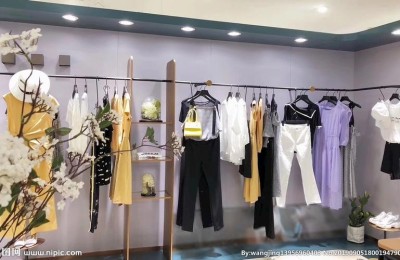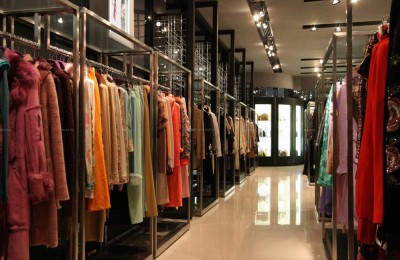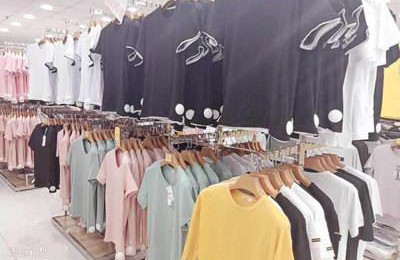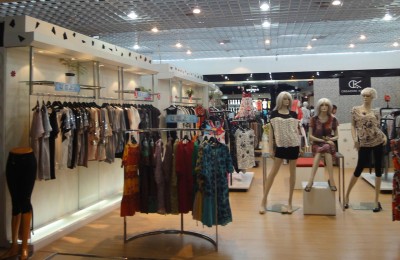Introduction: Since 2017, under the influence of supply-side reform and environmental protection rectification, the textile industry has significantly reduced overcapacity, and the market has entered a “once-in-a-decade” market. As supply exceeds demand, weaving manufacturers have the right to speak. Significantly enhanced, the payment method has also changed from “cash on delivery” to “cash on delivery”. However, this new normal only lasted for more than a year. This year, the weaving market has taken a sharp turn. The costs of raw materials, labor, water and electricity, rent, dyeing fees, etc. have continued to rise, and the textile industry has entered an era of meager profits. Macroeconomic downturn, confusing Sino-US trade, and weak terminal consumption have doubled the pressure on the textile market during this year’s unusual off-season. Coupled with the impact of external production capacity, the sprinkler market is even worse!
How will the market situation be this year for the jet market, which is affected by environmental protection and has less impact on production capacity? What situation are you facing?
1. More than 10,000 new air-jet looms have been added to the Shengze market, and the operating rate is as high as 90%!
Environmental protection rectification in the past two years has led to the suspension of production of many “sick” water-jet weaving manufacturers. As a jet-jet market that meets environmental standards, has it become a “hot potato”? In fact, for most textile bosses who have shut down, they choose to go to northern Jiangsu, Anhui, Hubei and other regions to continue the production of water-jet looms; therefore, in the past two or three years, the new production capacity of air-jet looms in Shengze has increased Not much actually.
“From what I understand, there are not many new air-jet looms in the Shengze market this year. It is estimated that there will be about 10,000 units, and a few large factories will only add a few hundred units.” Wujiang Yaxu Jet Loom Manager Sun of Weaving said, “The main reason is that the cost of air-jet looms is relatively high. Under this current market situation, textile bosses are more cautious in investing.”
It is understood that currently, Xiao Shao, Shengze, Manufacturers in textile industry clusters such as Changxing and Changshu frequently limit production due to high temperatures, and their operating rates have dropped significantly. According to the statistics of sample enterprises monitored by China Silk City Network, in the past month, the load of water-jet looms has dropped from 80-90% to 70-80%, the load of warp knitting has dropped from 70% to 50-60%, and the operating rate of circular knitting machines has dropped from 80% to 70%. It has dropped from 50% to 60% to 40% to 50%, but the operating rate of the jet market in Shengze is still relatively stable.
“Nowadays, the operating rate of air-jet looms in Shengze market is generally higher than that of water-jet looms. Most manufacturers’ machines are basically running at full capacity, and some can maintain an operating level of 80-90%.” Fu The manager of Sheng Textile Packaging said that in addition to making orders, some jet manufacturers will also make market goods to meet the market’s gray fabric procurement needs.
2. High elastic products such as T400 and T800 The supply exceeds the demand, making it a “hot commodity”!
This year’s textile market seems to have entered the off-season ahead of schedule. Coupled with the impact of external production capacity, water-jet fabric products are generally unsatisfactory. As the off-season atmosphere of the market deepens, conventional chemical fiber products are declining. Goods are slow to sell, and it is difficult to balance the production and sales of mainstream products such as polyester taffeta, pongee, and imitation silk, resulting in gray fabric inventory at a high of about 43 days.
Affected by the market environment and terminal demand, the jet market products have also experienced differentiation this year. “In the first half of the year, the jet market actually weakened year-on-year. Although our machines were fully operational, the inventory backlog last month was nearly one million meters. Recently, the market for stretch fabrics has obviously improved; especially T400 and high-elastic products. Hot selling.” Mr. Wu of Jinkang Textile said he was quite excited about the recent hot-selling products. “It seems that we have returned to the peak season last year. Orders are in short supply. Not only have the millions of meters of inventory that were accumulated in the early stage have been emptied, but many of them still need to queue up to wait for goods.”
It also mainly produces 100% cotton stretch, nylon stretch, and four-way stretch. Manager Qi, the relevant person in charge of Xinwu Textile, also expressed the same feeling. The performance of conventional jet products this year is very average, and there is a certain amount of inventory. However, elastic products such as T400 and T800 and cotton interwoven products have been very popular recently, and some products have even been sold out. They have become hot-selling products, with both volume and price rising.
3. The cost of jet raw materials is generally high, and there are many purchases. Be cautious!
The price of chemical fiber raw materials has skyrocketed in recent times, making water-jet weaving manufacturers, which already have poor profits, even more “frightened.” The raw materials surged in the early stage. Out of the mentality of buying up and not buying down, many weaving manufacturers took the opportunity to stock up and increase some raw material inventories. However, it didn’t take long for the raw material market to take a turn for the worse. Many textile bosses used the raw materials they bought at high prices in the early stage to produce low-priced products. Gray cloth, profits are just swallowed up. At this point, many manufacturers are operating more cautiously and do not dare to purchase raw materials at will. In the same situation, do air-jet weaving manufacturers also feel the same way?
“Recently, chemical fiber raw materials have been ups and downs, and the fluctuations are indeed relatively large, but we are less involved. Jet products mainly produce cuprammonium fabrics, acetic acid fabrics and rayon fabrics, etc.; the raw materials involved are basically cupro, acetic acid , rayon and the like, the price fluctuations are not big, some of them are imported raw materials, the cost is relatively high, it is basically a normal purchase.” Manager Li of Suzhou Xinmin Textile said, “The market goods are mainlyThe general environment has a relatively large impact. As for the order goods, it still depends on the specific raw materials required for the fabrics ordered by the customer. Basically, the raw material stocking time is maintained at about 20-30 days. ”
Manager Gu of Jiaxing Minhua Textile said that their jets mainly focus on cotton or interwoven products. There are still certain differences between cotton price changes and chemical fiber changes. As for raw materials, they basically use them as they are bought. . There has not been too much stocking of raw materials recently, and it generally stays at about 15-25 days. On the one hand, we are afraid of stocking up at a high level, which will compress our own profits; on the other hand, we have too many raw materials in stock, which takes up more funds and is not conducive to the circulation of corporate funds.
Since this year, terminal demand has The weakening of the economy and the fluctuation of Sino-US trade relations will more or less have a certain impact on the jet market. But overall, the jet market is less affected by overcapacity and the market is slightly better; if the market improves, it will also It will recover faster than water-jet loom companies. Of course, we still look forward to whether the Golden Nine and Silver Ten can exert force in the future. The textile market, which depends on the weather, also hopes that the severe winter will drive the textile market!</p







